A (Black) Gat in the Hand: John Bullard on REH’s Rough and Ready Clowns of the West – Part II
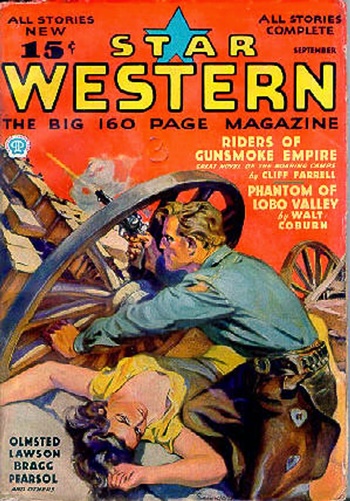 “You’re the second guy I’ve met within hours who seems to think a gat in the hand means a world by the tail.” – Phillip Marlowe in Raymond Chandler’s The Big Sleep
“You’re the second guy I’ve met within hours who seems to think a gat in the hand means a world by the tail.” – Phillip Marlowe in Raymond Chandler’s The Big Sleep
(Gat — Prohibition Era term for a gun. Shortened version of Gatling Gun)
Last week, fellow Robert E Howard Foundation Award-winner John Bullard wrote about Breckenridge Elkins. At the end of his life, it wasn’t Conan and fantasy that REH was earning a living with – it was Westerns with humor. So, here’s Part II, covering more funny Westerns. Next week, another Pulp (and Sherlock Holmes) buddy, William Patrick Murray, will delve into REH’s Weird Westerns. Read on!
Rough and Ready Clowns of the West: Robert E. Howard’s Humorous Western Characters Part II
Last week, we looked at Robert E. Howard’s attempts to break into other pulps besides his humorous boxing tales, and fantasy, and horror stories. His creation in the summer of 1933, of Breckinridge Elkins, a recurring funny Western character series for the Action Stories pulp, became very popular and lucrative. His success with it had Howard try to create more funny Western characters to sell to increase his earnings, just as he had done with his funny boxing characters. He created three characters that were each based off Breckinridge Elkins to varying degrees. He was able to sell all three to the pulps, with two starting on the road to becoming recurring characters that only ended with Howard’s death.
Bearfield Elston, the Psychotic Breckinridge Elkins
There was one rejected Breckinridge Elkins story, “A Elkins Never Surrenders”, that Howard rewrote to star his new character of Bearfield Elston. Under its “newish” title, “A Elston Never Surrenders”, Howard sent it to his agent, Otis Kline. Kline eventually sold it to the Star Western pulp in May, 1936, where it was published in the September 1936 issue under its new title of “The Curly Wolf of Sawtooth”. In comparing the two stories, Howard generally just changed the name of Breckinridge to Bearfield Elston.
This story works a lot better with this new character instead of Breckinridge, as the main character is exceptionally quick to commit violence whereas in the other Elkins stories, Breckinridge tends to be slower to act, and usually receives some provocation that brings out his violent nature. Elston’s “Pap” sends him to go help out their kin, the Garfields in Arizona, who are in a feud with the Clantons.
Bearfield shows up to find his Garfield kinfolk lacking in the fire and vinegar department. Bearfield does his best to get them appropriately fired up for the feud with the Clantons, but they just don’t seem to be made of the same strain of Elston blood, much to Bearfield’s disgust. He also immediately runs afoul of the law in the town of Sawtooth, who appear to be in full support of the Clantons as Elston sees it.
Elston then proceeds to wage a one man war on the Clantons, the residents of Sawtooth, and the U.S. Army, dragging the Garfields into the thick of the fighting. At one point in the story, Bearfield remarks upon hearing that the town of “Sawtooth was in considerable turmoil, and folks was talking about coming over in a mob and lynching me. … [B]ut I give no heed, because strangers is always trying to lynch me in their ignorance.”
This statement definitely works more for Bearfield than it does in the original Elkins version due to all of the insanely cartoonish violence in the story that the main character initiates that just seems wrong for Breckinridge to have done in his series.
Since Howard just changed the names, Bearfield is also huge, incredibly strong, and again, almost invulnerable like Breckinridge. The story has very violent comedic moments in it that Conan would have heartily approved of. Howard only wrote this Bearfield Elston story, but once it was sold to Star Western in late May, 1936, I am sure he would have written more stories with the character for this pulp. For his next funny Western character, Howard used Bearfield’s quick to violence nature as a starting point in creating this character’s personality.
Buckner J. Grimes, the Rambling Breckinridge Elkins
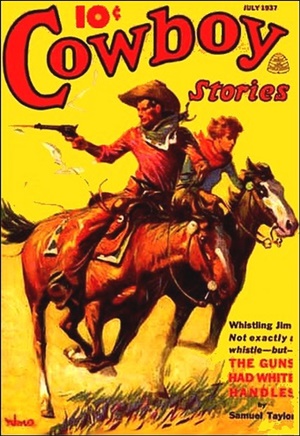 Howard started to branch out from his Breckinridge Elkins template with his next character, Buckner J. (“for Jeopardy”) Grimes. Howard only wrote three Grimes stories before his death, but they are different from the Breckinridge Elkins, and Bearfield Elston, tales. Buckner is a Texan Hellcat, full of fire. Like Breck, he also has a “Pap”, but unlike Pap Elkins, Buckner’s Pap is tired of his son’s wildness.
Howard started to branch out from his Breckinridge Elkins template with his next character, Buckner J. (“for Jeopardy”) Grimes. Howard only wrote three Grimes stories before his death, but they are different from the Breckinridge Elkins, and Bearfield Elston, tales. Buckner is a Texan Hellcat, full of fire. Like Breck, he also has a “Pap”, but unlike Pap Elkins, Buckner’s Pap is tired of his son’s wildness.
In the first chronological story, “Knife River Prodigal”, Howard introduces Buckner’s character to the reader by Buckner answering his father’s question about news of anything exciting happening in their local Texas town. Buckner tells his father that only the usual events were happening consisting of a new girl in town who was already betrothed to a town ruffian, and a poker game ending in a knife fight. His father starts complaining by saying how, when he was young, there was always something exciting happening in town. Buckner then interrupts to say:
“Oh, yes,” I said suddenly. “I just happened to remember I shot a feller in the Diamond Palace Saloon.”
Pap turned around and combed his beard with his fingers.
“Gittin’ a mite absent-minded, ain’t you, Buckner?” sez he. “did they identify the remains?”
“Aw, I didn’t croak him,” sez I. “I just kinda shot him through the shoulder and a arm and the hind laig. He was a stranger in these here parts, and I thought maybe he didn’t know no better.”
“No better’n what?” demanded Pap. “What was the argyment?”
“I don’t remember,” I confessed. “It was somethin’ about politics.”
“What you know about politics?” snorted Pap.“Nothin’,” I sez. “That’s why I plugged him. I run out of argyments.”
Pap, exasperated with the continual feuds and fights with other folks and trouble with the law that Buckner keeps getting himself and the family into, tells his son that it’s time for him to go see the world, and head to California’s goldfields. Buckner heads out on his brother Bill’s horse, taken without Bill’s consent, of course. Buckner soon becomes a traveling companion with a gang of outlaws in New Mexico. When the gang descends on a small town that they regularly ravage, Buckner is jokingly made the town’s new sheriff by the gang’s leader. As Buckner interacts with the poor, down-trodden townsfolk, watching the gang torment them, he decides if he’s the new sheriff, it’s time to act like a sheriff. After taking care of the gang, Buckner continues on his journey to California.
The next two stories follow Buckner on his journey to California, with both happening in Arizona. In the second story, “A Man-Eating Jeopard”, Buckner comes upon a town where two gangs are at war with each other for control of the town.
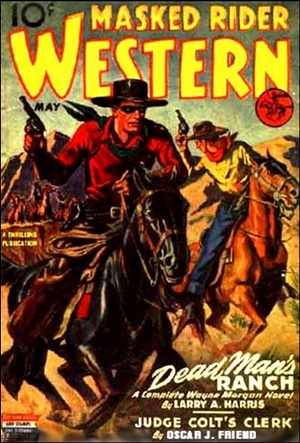 In the third story, “Ring-Tailed Tornado”, Howard has Buckner go to retrieve a woman for a romantic rival of his to marry, from the town of Alderville in Arizona. There, things go very wrong for Buckner, some Buffalo hunters, and the authorities and citizens of the town. The humor, action and violence in this story is fairly ramped up, as if the Elkins’ and Elston stories got likkered up good on moonshine before going out to shoot the moon.
In the third story, “Ring-Tailed Tornado”, Howard has Buckner go to retrieve a woman for a romantic rival of his to marry, from the town of Alderville in Arizona. There, things go very wrong for Buckner, some Buffalo hunters, and the authorities and citizens of the town. The humor, action and violence in this story is fairly ramped up, as if the Elkins’ and Elston stories got likkered up good on moonshine before going out to shoot the moon.
Howard uses some ideas from some of his Elkins stories to construct the plot, and does a good job with the new tale. The story wasn’t sold by Howard before his death. However, it was rewritten by Otis Kline’s office as a Breckinridge Elkins story and sold under the title “Texas John Alden” by “Patrick Ervin”, one of Howard’s pseudonyms, and published in the Masked Rider Western pulp, in 1944.
Howard only wrote three Buckner J. Grimes stories before his death, but with them, he had established another funny Western character for the important Street & Smith Western pulp, Cowboy Stories, which published the first two stories.
Pike Bearfield, the Texan Breckinridge Elkins
The Breckinridge Elkins stories were so popular in Action Stories that when the pulp’s editor, Jack Byrne, moved over to the more prestigious Munsey Group’s Argosy Editorship, he specifically asked for Howard to do him a big favor. In a letter to fellow pulpster E. Hoffmann Price, on April 21, 1936, Howard wrote:
But what may turn out to be the biggest break for me yet: Jack Byrne, of Fiction House, to whom I’ve sold many prize fight and Elkins yarns in the past, is now editor of the Munseys, and wants me to write a series of humorous shorts on the Elkins order for Argosy.
Argosy was one of the top pulps in prestige and pay, and Howard immediately accepted Byrne’s request. In a draft of a letter dated on the same day as the Price letter, Howard states:
Dear Mr. Byrne:
My agent, O.A. Kline, tells me that you have suggested that I try my hand at a series of humorous yarns for Argosy, on the general type of the Breckinridge Elkins stories.
I have in mind a new character, Pike Bearfield, of Wolf Mountain, Texas, about as big, dumb, and ludicrous as B. Elkins. Here is an outline of the first yarn of the series, as I have conceived it. It begins in the form of a letter written by Bearfield to his boss, William Westphal.
Howard then begins his outline for the first Pikeston “Pike” Bearfield story, a cattle drive that got out of control when Pike took over command of the group even though he had never been a cattle drive boss. The outline is given in the form of a letter by Pike to the cattle’s owner explaining what happened. There exists an unfinished version of this story posthumously named “The Diablo Trail”..
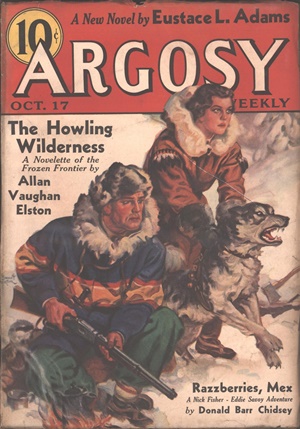 The next Bearfield story, “A Gent From the Pecos”, as you can tell from its title, is much in the vein of the Elkins’ type stories that Byrne wanted to appear in Argosy. Unlike Breck, Pike is more in line with how Howard wrote Bearfield Elston and Buckner J. Grimes in being more proactive than reactive. Pike also has a cantankerous horse, Satanta, like Breck’s Cap’n Kidd. The story begins with Pike receiving a letter from his Pap. It is a forwarded letter from their East Texas kin that his Uncle Joab Hawkins was caught by the neighboring Watson family in their pigpen allegedly trying to steal one of their hogs and has apparently gone loco. Pap orders Pike to head over to East Texas to help their kin out in dealing with the shame and ignominy of having a hog-thief in the family. Pike arrives to find that his Uncle has indeed become a serial purloiner of pigs, but there may be a method to his madness.
The next Bearfield story, “A Gent From the Pecos”, as you can tell from its title, is much in the vein of the Elkins’ type stories that Byrne wanted to appear in Argosy. Unlike Breck, Pike is more in line with how Howard wrote Bearfield Elston and Buckner J. Grimes in being more proactive than reactive. Pike also has a cantankerous horse, Satanta, like Breck’s Cap’n Kidd. The story begins with Pike receiving a letter from his Pap. It is a forwarded letter from their East Texas kin that his Uncle Joab Hawkins was caught by the neighboring Watson family in their pigpen allegedly trying to steal one of their hogs and has apparently gone loco. Pap orders Pike to head over to East Texas to help their kin out in dealing with the shame and ignominy of having a hog-thief in the family. Pike arrives to find that his Uncle has indeed become a serial purloiner of pigs, but there may be a method to his madness.
The next three stories involving Pike really show Howard starting to stretch his writing abilities. “Gents on the Lynch” takes the form of a letter Pike wrote to his brother about Pike’s adventure looking for gold in Colorado. “The Riot at Bucksnort” shows Howard really playing with and stretching his writing abilities, as the story is told like Dracula in a series of newspaper editorials and articles, telegrams, and letters by the various participants detailing the events of the town of Bucksnort’s vicious election campaign for its City Marshall, and the day Pike came to town as an unwitting, unknowing campaign prop to be used by the two candidates. In many ways, this story reads like Howard taking a third look at his previous two stories of “A Elkins Never Surrenders” and “A Elston Never Surrenders”, and some other Elkins stories, and wondering if he could write a better, more insane version from them.
He succeeded in his goal as this story is laugh-out loud hilarious. The final Pike story, “While the Smoke Rolled”, is an interesting attempt by Howard in writing his Westerns. He uses an old Bearfield family heirloom letter written by their ancestor, Boone Bearfield, detailing how he helped save the Unites States during the War of 1812 by derailing an attempt by an Englishman to unite the Native American tribes along the upper Missouri River as allies with Great Britain against America.
Pike only appears as the author of the introductory letter to an historian introducing his ancestor’s attached letter. Amazingly, Howard here has expanded his Pike Bearfield world by writing a tale involving an ancestor’s feats decades before the supposed main character of the stories is alive. Just think if he had lived, what Howard might have done in creating a Bearfield Universe of ancestors and their adventures in the founding and westward expansion of America. The first three Pike stories were published in Argosy over three issues in October, 1936.
Conclusion
As was previously stated, Howard’s creation of his stable of humorous Westerners came fairly easily to him from living in West Texas and meeting the old timers and listening to their stories of what life was like on the frontier before civilization came. However, just because civilization had arrived, it didn’t mean that things had quieted down, as Howard also grew up in the Cross Plains area during its life as an oil boom town, and got to see the violence and violent humor of rough and tumble oilfield workers and area inhabitants in real life. This all added seasoning to his stories. Because of this, he found it so easy to write his humorous and non-humorous western tales that he wrote to H.P. Lovecraft in a letter less than a month before his death:
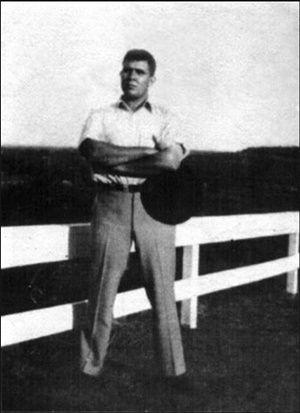 I find it more and more difficult to write anything but western yarns. I have definitely abandoned the detective field, where I never had any success anyway, and which represents a type of story I actively detest. I can scarcely endure to read one, much less write one. Attempts to make a living by writing historical fiction proved a flop, though a certain editor is considering a series of piratical yarns, if I can remodel the first to suit his tastes.
I find it more and more difficult to write anything but western yarns. I have definitely abandoned the detective field, where I never had any success anyway, and which represents a type of story I actively detest. I can scarcely endure to read one, much less write one. Attempts to make a living by writing historical fiction proved a flop, though a certain editor is considering a series of piratical yarns, if I can remodel the first to suit his tastes.
But I am not expecting much from it. I have become so wrapped up in western themes that I have not, as yet, written a follow-up yarn for the last Oriental adventure novelet bought by Street & Smith, though Kline’s been urging me to get one in circulation. I will write some more, doubtless, but even my interest in things Oriental is waning in comparison to my interest in the drama of early America. The new editor of Argosy has asked me to create a new western character on the order of Breckinridge Elkins, and I’ve made one in the person of Pike Bearfield of Wolf Mountain, Texas. I don’t know how he’ll come out.
If I can get a series running in Argosy, keep the Elkins series running in Action Stories, now a monthly, and the Buckner J. Grimes yarns in Cowboy Stories, I’ll feel justified in devoting practically all my time to the writing of western stories. I have always felt that if I ever accomplished anything worthwhile in the literary field, it would be with stories dealing of the central and western frontier.(Lovecraft, May 13, 1936)
His Western clown tales vary in their nature in the level of slapstick and crazy humor involved with each character’s stories. Breckinridge Elkin’s tales are fairly cartoonish in their action and violence. Bearfield Elston’s story is a Bugs Bunny cartoon turned up way past 11. Buckner J. Grimes’s and Pike Bearfield’s stories, with the exception of both Grimes’s and Bearfield’s zany third stories, are screwball comedies compared to the other two character’s tales.
Howard had hit a gold mine with his Western tales, both humorous and straight, and was making good money regularly as opposed to having to wait for and beg Farnsworth Wright to send him his money owed him by Weird Tales. He even had that Holy Grail that many pulp writers toiled for, a recurring character in three separate pulps, with a potential fourth just waiting for more work to be done in creating it.
Even during the final year of his mother’s life, when her care was taking time away from his writing, he stated he was still able to write his Westerns fairly easily, practically up to her final days. If you haven’t read any of Howard’s humorous or straight Westerns, you should give them a try. He seems to have finally hit upon a subject that captured his long-held interests in the history and settlement of the West, and that excited him to write some of his most entertaining stories.
Prior Posts in A (Black) Gat in the Hand – 2023 Series (7)
Back Down those Mean Streets in 2023
Will Murray on Hammett Didn’t Write “The Diamond Wager”
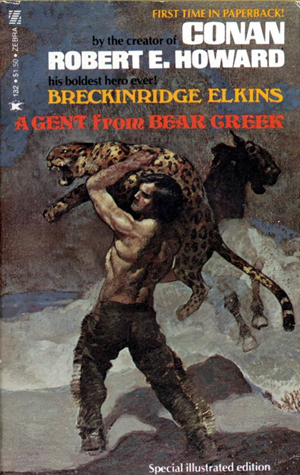 Dashiell Hammett – ZigZags of Treachery
Dashiell Hammett – ZigZags of Treachery
Ten Pulp Things I Think I Think
Evan Lewis on Cleve Adams
T. T. Flynn’s Mike & Trixie (The ‘Lost Intro’)
Prior posts in A (Black) Gat in the Hand – 2022 Series (16)
Asimov – Sci Fi Meets the Police Procedural
The Adventures of Christopher London
Weird Menace from Robert E. Howard
Spicy Adventures from Robert E. Howard
Thrilling Adventures from Robert E. Howard
Norbert Davis’ “The Gin Monkey”
Tracer Bullet
Shovel’s Painful Predicament
Back Porch Pulp #1
Wally Conger on ‘The Hollywood Troubleshooter Saga’
Arsenic and Old Lace
David Dodge
Glen Cook’s Garrett, PI
John Leslie’s Key West Private Eye
Back Porch Pulp #2
Norbert Davis’ Max Latin
Prior posts in A (Black) Gat in the Hand – 2021 Series (8)
The Forgotten Black Masker – Norbert Davis
Appaloosa
A (Black) Gat in the Hand is Back!
Black Mask – March, 1932
Three Gun Terry Mack & Carroll John Daly
Bounty Hunters & Bail Bondsmen
Norbert Davis in Black Mask – Volume 1
Prior posts in A (Black) Gat in the Hand – 2020 Series (19)
Hardboiled May on TCM
Some Hardboiled streaming options
Johnny O’Clock (Dick Powell)
Hardboiled June on TCM
Bullets or Ballots (Humphrey Bogart)
Phililp Marlowe – Private Eye (Powers Boothe)
Cool and Lam
All Through the Night (Bogart)
Dick Powell as Yours Truly, Johnny Dollar
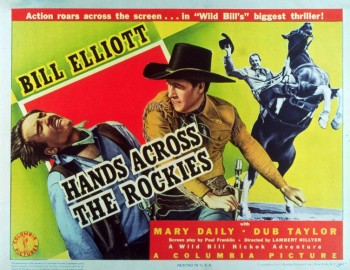 Hardboiled July on TCM
Hardboiled July on TCM
YTJD – The Emily Braddock Matter (John Lund)
Richard Diamond – The Betty Moran Case (Dick Powell)
Bold Venture (Bogart & Bacall)
Hardboiled August on TCM
Norbert Davis – ‘Have one on the House’
with Steven H Silver: C.M. Kornbluth’s Pulp
Norbert Davis – ‘Don’t You Cry for Me’
Talking About Philip Marlowe
Steven H Silver Asks you to Name This Movie
Cajun Hardboiled – Dave Robicheaux
More Cool & Lam from Hard Case Crime
A (Black) Gat in the Hand – 2019 Series (15)
Back Deck Pulp Returns
A (Black) Gat in the Hand Returns
Will Murray on Doc Savage
Hugh B. Cave’s Peter Kane
Paul Bishop on Lance Spearman
A Man Called Spade
Hard Boiled Holmes
Duane Spurlock on T.T. Flynn
Andrew Salmon on Montreal Noir
Frank Schildiner on The Bad Guys of Pulp
Steve Scott on John D. MacDonald’s ‘Park Falkner’
William Patrick Murray on The Spider
John D. MacDonald & Mickey Spillane
Norbert Davis goes West(ern)
Bill Crider on The Brass Cupcake
A (Black) Gat in the Hand – 2018 Series (32)
George Harmon Coxe
Raoul Whitfield
Some Hard Boiled Anthologies
Frederick Nebel’s Donahue
Thomas Walsh
Black Mask – January, 1935
Norbert Davis’ Ben Shaley
D.L. Champion’s Rex Sackler
Dime Detective – August, 1939
Back Deck Pulp #1
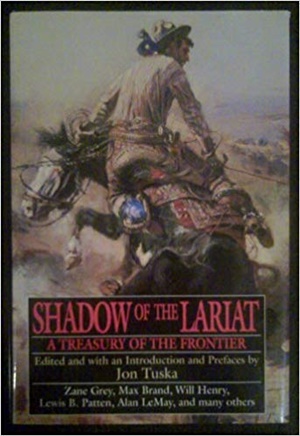 W.T. Ballard’s Bill Lennox
W.T. Ballard’s Bill Lennox
Day Keene
Black Mask – October, 1933
Back Deck Pulp #2
Black Mask – Spring, 2017
Frank Schildiner’s ‘Max Allen Collins & The Hard Boiled Hero’
A (Black) Gat in the Hand: William Campbell Gault
A (Black) Gat in the Hand: More Cool & Lam From Hard Case Crime
MORE Cool & Lam!!!!
Thomas Parker’s ‘They Shoot Horses, Don’t They?’
Joe Bonadonna’s ‘Hardboiled Film Noir’ (Part One)
Joe Bonadonna’s ‘Hardboiled Film Noir’ (Part Two)
William Patrick Maynard’s ‘The Yellow Peril’
Andrew P Salmon’s ‘Frederick C. Davis’
Rory Gallagher’s ‘Continental Op’
Back Deck Pulp #3
Back Deck Pulp #4
Back Deck Pulp #5
Joe ‘Cap’ Shaw on Writing
Back Deck Pulp #6
The Black Mask Dinner
John Bullard – John Bullard is a retired attorney in Howard’s home state of Texas who caught the Howard bug after reading one of Howard’s weird fiction westerns as a young boy. It further warped his already twisted young mind. He has edited the new “Ultimate Editions” of the three-volume set of The Collected Letters of Robert E. Howard, which has sadly turned into a Sisyphean task…
He has won some awards for some of his articles on Howard and was delighted to contribute two essays to Hither Came Conan. He is a member of the Robert E. Howard Foundation Board of Directors, and helps out with the ongoing efforts of the Robert E. Howard Foundation Press to update and reissue their Howard publications. He is a long-time fan of the pulps and still doesn’t have enough time to read everything that is available, even after retiring!
 Bob Byrne’s ‘A (Black) Gat in the Hand’ made its Black Gate debut in 2018 and has returned every summer since.
Bob Byrne’s ‘A (Black) Gat in the Hand’ made its Black Gate debut in 2018 and has returned every summer since.
His ‘The Public Life of Sherlock Holmes’ column ran every Monday morning at Black Gate from March, 2014 through March, 2017. And he irregularly posts on Rex Stout’s gargantuan detective in ‘Nero Wolfe’s Brownstone.’ He is a member of the Praed Street Irregulars, founded www.SolarPons.com (the only website dedicated to the ‘Sherlock Holmes of Praed Street’) and blogs about Holmes and other mystery matters at Almost Holmes.
He organized Black Gate’s award-nominated ‘Discovering Robert E. Howard’ series, as well as the award-winning ‘Hither Came Conan’ series. Which is now part of THE DEFINITIVE guide to Conan. He also organized 2023’s ‘Talking Tolkien.’
He has contributed stories to The MX Book of New Sherlock Holmes Stories – Parts III, IV, V, VI, XXI, and XXXIII.
He has written introductions for Steeger Books, and appeared in several magazines, including Black Mask, Sherlock Holmes Mystery Magazine, The Strand Magazine, and Sherlock Magazine.
I would like to thank Bob and John O’Neill for allowing me to highjack this site’s wonderful focus from fantasy, science fiction, horror and hard-boiled mysteries to humorous westerns. Thanks, Gents!
Of course, you’re now in Black Gate’s infamous FOB (Friends of Bob) club. I doubt you can even get into the lobby at Black Gate World Headquarters, from now on.
🙂
Drat!!!! Oh well, the keen decoder ring you give your FOB members will make up for not being allowed in to BG Hq.
Lovely cover illustration by Jeffrey Catherine Jones on the 1975 Zebra edition of A Gent from Bear Creek. And ISFDB tells me that the “special illustrations” within are by Tim Kirk. Worth looking for, even if Mr. Bullard had not so winningly described the stories themselves.
Hey, John. Nice article.
Hi Ken! Thank you! Hope you’re doing well.
I’m a great fan of Robert E. Howard but I must confess that his westerns are those stories of his that I am least familiar with. Thanks for a great article, Mr. Bullard. Most informative.
Wait…DECODER RING????
You’re welcome, and thank you for your kind words, Mr. Boyle.
Yup, a decoder ring. Bob is nothing if not extravagant with his FOBs. If you make it into the prestigious “Grand Exalted Order of FOB Irregulars”, you get a Deerstalker hat and Meerschaum pipe both inscribed with a picture of Bob!